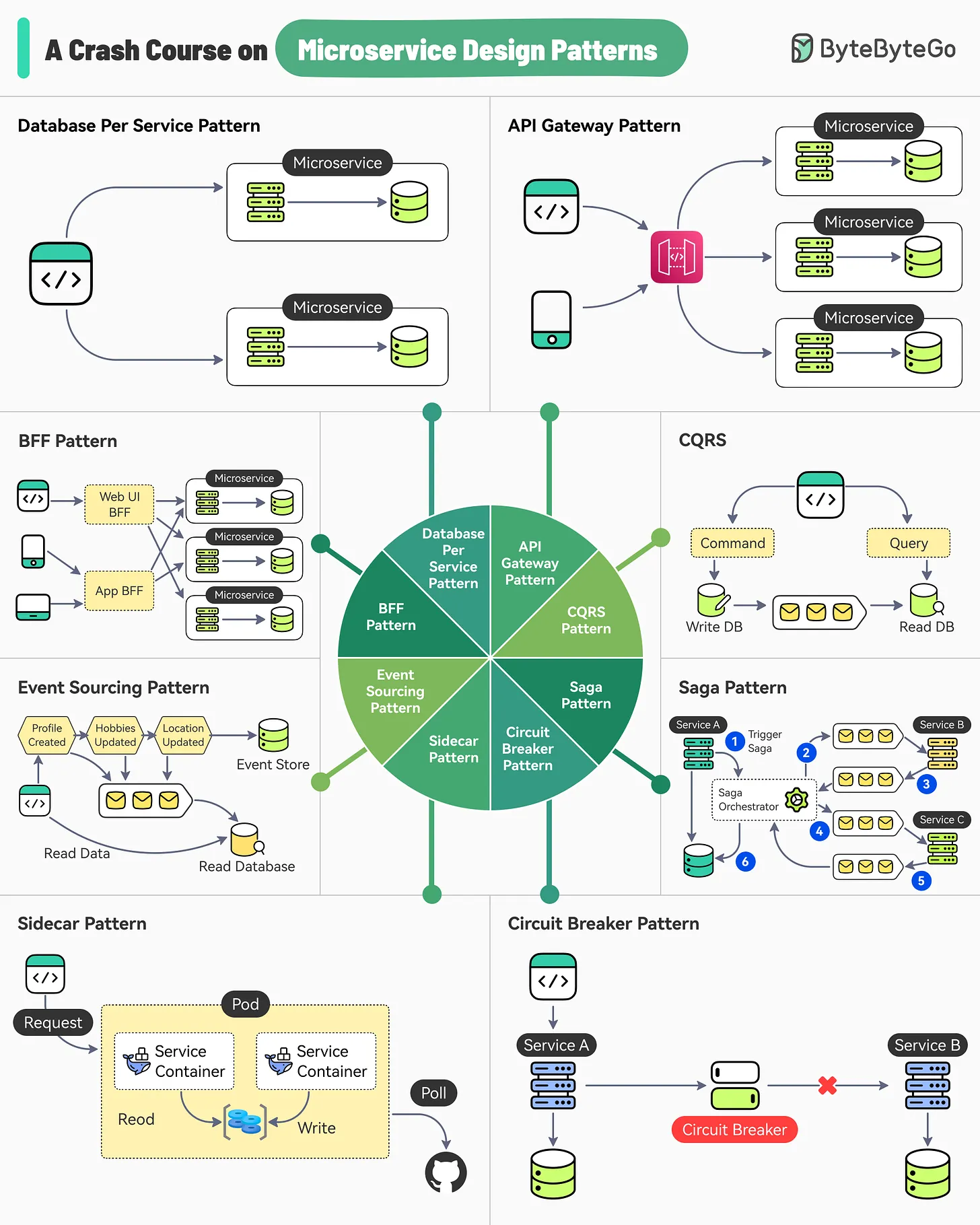Microservice Design Patterns: Difference between revisions
Created page with "=Introduction= This page is to provide an override of microservice design patterns<br> File:Microservices Patterns.png<br> =Database Per Service - Popular= This pattern ensures each microservice has its own database, reducing dependencies and enabling scalability. It prevents cross-service data issues but requires careful synchronization strategies. Widely used in microservices architecture, companies like Netflix and Amazon implement this to ensure service autonomy...." |
|||
| Line 1: | Line 1: | ||
=Introduction= | =Introduction= | ||
This page is to provide an override of microservice design patterns<br> | This page is to provide an override of microservice design patterns<br> | ||
[[File:Microservices Patterns.png]]<br> | [[File:Microservices Patterns.png | 400px]]<br> | ||
=Database Per Service - Popular= | =Database Per Service - Popular= | ||
This pattern ensures each microservice has its own database, reducing dependencies and enabling scalability. It prevents cross-service data issues but requires careful synchronization strategies. Widely used in microservices architecture, companies like Netflix and Amazon implement this to ensure service autonomy. | This pattern ensures each microservice has its own database, reducing dependencies and enabling scalability. It prevents cross-service data issues but requires careful synchronization strategies. Widely used in microservices architecture, companies like Netflix and Amazon implement this to ensure service autonomy. | ||
Revision as of 01:31, 26 March 2025
Introduction
This page is to provide an override of microservice design patterns

Database Per Service - Popular
This pattern ensures each microservice has its own database, reducing dependencies and enabling scalability. It prevents cross-service data issues but requires careful synchronization strategies. Widely used in microservices architecture, companies like Netflix and Amazon implement this to ensure service autonomy.
API Gateway Highly Popular
An API Gateway acts as a single entry point for client requests, routing them to appropriate microservices while handling authentication, rate limiting, and caching. It simplifies management and security. Popular solutions like AWS API Gateway, Kong, and NGINX are widely adopted by enterprises.
Backend For Frontend (BFF) Gaining Popularity
BFF is a specialized API layer that tailors backend responses for specific front-end clients, improving efficiency and user experience. It is commonly used in multi-platform applications by companies like Spotify and Netflix to optimize performance.
CQRS - Moderately Popular
CQRS separates read and write operations into different models, improving scalability and performance. This is particularly useful for event-driven applications and high-traffic systems. It’s widely used in banking, e-commerce, and real-time applications.
Event Sourcing - Niche
Instead of storing only the current state, event sourcing logs all state changes as events. This ensures auditability and allows time-travel debugging. Popular in financial systems and blockchain-based applications, it’s used by companies like Uber and Walmart.
Saga - Popular in distributed systems
The Saga pattern manages distributed transactions in microservices through a series of compensating actions, ensuring consistency without locking resources. Common in e-commerce and banking, it’s used by businesses like Shopify and PayPal.
Sidecar Highly Popular in Cloud-Native Apps
Sidecar deploys auxiliary services alongside main applications, enhancing observability, security, and networking without modifying the core service. It’s a key component of service meshes like Istio and Linkerd, widely used in Kubernetes deployments.
Circuit Breaker - Very Popular
A circuit breaker prevents system failures by detecting faults and stopping requests to failing services, allowing recovery. Netflix popularized this with Hystrix, and it remains a best practice in resilient microservice architectures.
Database Per Service,API Gateway,BFF,CQRS,Event Sourcing,Saga,Sidecar,Circuit Breaker